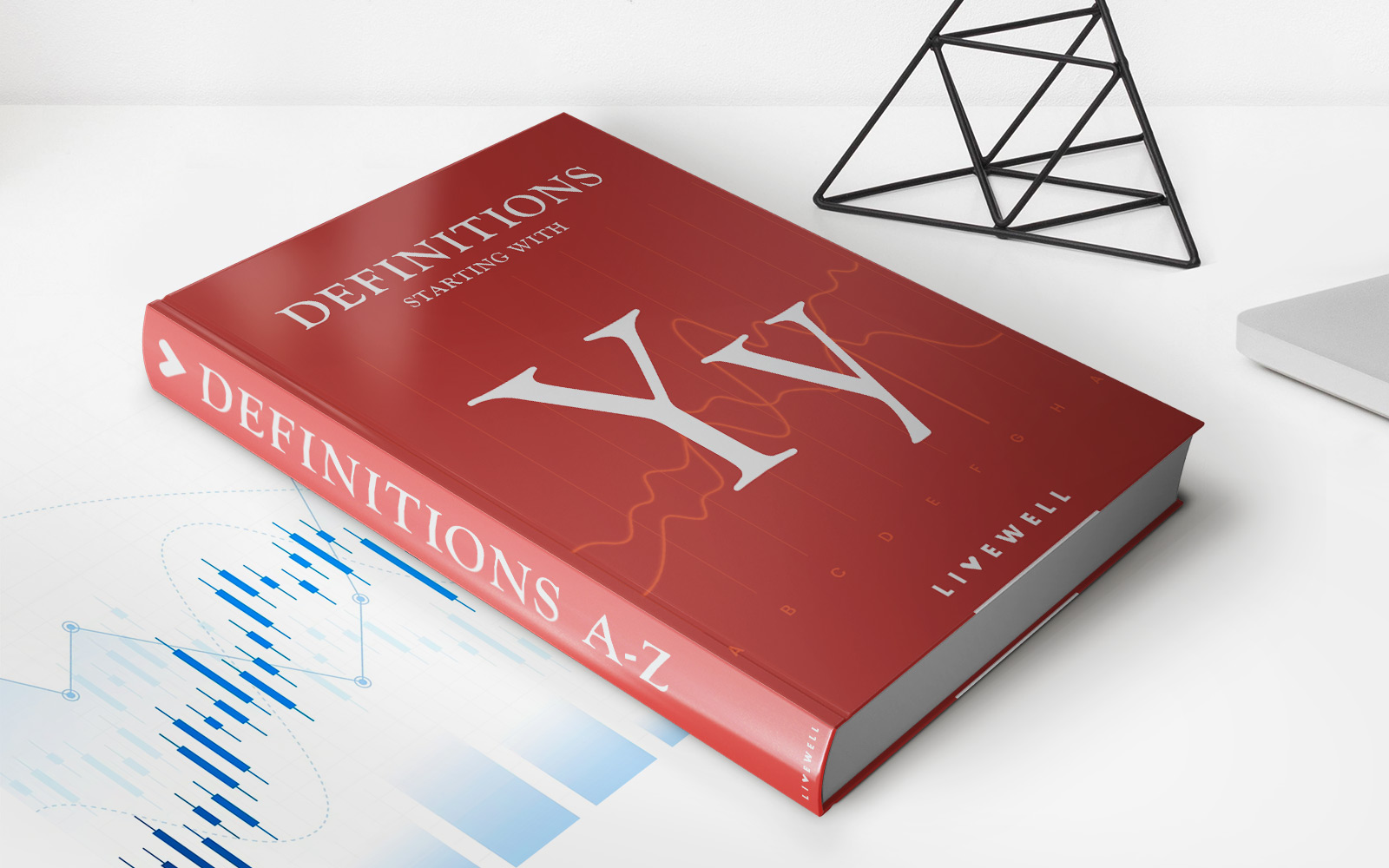

Finance
How Do Student Loans Work For Graduate School
Published: January 20, 2024
Discover how student loans work for graduate school and get the financial support you need to pursue your advanced education in finance.
(Many of the links in this article redirect to a specific reviewed product. Your purchase of these products through affiliate links helps to generate commission for LiveWell, at no extra cost. Learn more)
Table of Contents
Introduction
Graduate school is a significant investment in your future, opening up doors to advanced career opportunities and higher earning potential. However, pursuing a graduate degree often comes with a hefty price tag. This is where student loans for graduate school can play a crucial role in financing your education.
Unlike undergraduate student loans, which are widely discussed and understood, student loans for graduate school can be a bit more complex. It’s important to have a clear understanding of how these loans work before diving into the world of higher education.
In this article, we will demystify the process of obtaining and managing student loans for graduate school. We will explore the different types of loans available, including both federal and private options. We will also discuss how to apply for these loans, what to expect during the repayment phase, and even touch upon the possibility of loan forgiveness for graduate students.
By understanding the ins and outs of graduate student loans, you’ll be better equipped to make informed decisions about your education and your financial future.
So, let’s dive in and explore the world of student loans for graduate school, empowering you to make the best choices for your academic and career endeavors.
Understanding Graduate Student Loans
Graduate student loans are financial tools designed specifically for students pursuing advanced degrees, such as master’s or doctoral programs. These loans help cover the costs of tuition, fees, books, and living expenses during the course of your graduate studies.
Unlike undergraduate loans, graduate student loans typically have higher borrowing limits, as advanced degrees often come with higher tuition costs. These loans are intended to bridge the gap between the funds you have available and the overall cost of your education.
It’s important to note that graduate student loans are considered a form of financial aid and are available to both full-time and part-time students. They can be obtained from both federal and private sources, each with its own set of terms and conditions.
One key aspect of understanding graduate student loans is the concept of interest. Similar to other types of loans, when you borrow money for your graduate education, you will be charged interest on the principal amount. The interest rate can vary depending on the type of loan, your creditworthiness, and other factors.
However, one crucial difference is that some federal loans offer subsidized interest. This means that the federal government pays the interest on the loan while you are in school or during certain deferment periods, reducing the overall cost of borrowing.
Another important aspect to consider is loan fees. Some student loans, particularly federal loans, may come with origination fees, which are a percentage of the total loan amount. These fees are deducted upfront, reducing the actual amount disbursed to you.
Understanding the specifics of your student loans, such as interest rates and fees, will enable you to make informed decisions about repayment, budgeting, and overall finance management during and after your graduate studies.
Now that we have a general understanding of graduate student loans, let’s delve into the different types of loans available for graduate students.
Types of Graduate Student Loans
When it comes to financing your graduate education, there are two main types of loans available: federal student loans and private student loans. Let’s take a closer look at each type:
Federal Loans for Graduate Students: Federal student loans are loans provided by the U.S. Department of Education. These loans are widely available to students pursuing higher education and offer various benefits and repayment options. The most common types of federal loans for graduate students include:
- Direct Unsubsidized Loans: These loans are available to both undergraduate and graduate students. With direct unsubsidized loans, the interest accrues from the time the loan is disbursed, and you are responsible for paying the interest.
- Grad PLUS Loans: Grad PLUS loans are credit-based loans available to graduate or professional students. These loans have higher interest rates compared to direct unsubsidized loans but offer higher borrowing limits.
Private Loans for Graduate Students: Private student loans are offered by banks, credit unions, and other financial institutions. These loans are not backed by the government and have different terms and conditions compared to federal loans. Private loans for graduate students often require a credit check and may have higher interest rates and fees. However, they can be a viable option if you have exhausted your federal loan options or if you are looking for more flexible repayment options.
It’s important to carefully consider the pros and cons of each type of loan before making a decision. Federal loans generally offer more borrower-friendly terms, such as income-driven repayment plans, loan forgiveness options, and deferment or forbearance options. On the other hand, private loans may offer more competitive interest rates or tailor-made repayment options.
Before taking out any loan, it’s crucial to research and compare different lenders, understand the terms and conditions, and assess your repayment capabilities. Be sure to borrow only what you need and explore all available options to minimize your overall debt burden.
Now that we have covered the types of graduate student loans, let’s move on to the next step: applying for these loans.
Federal Loans for Graduate Students
Federal loans for graduate students are a popular option due to their borrower-friendly terms, flexibility, and potential for loan forgiveness. Let’s explore the two main types of federal loans available for graduate students:
1. Direct Unsubsidized Loans: Direct Unsubsidized loans are available to both undergraduate and graduate students. These loans do not require a demonstration of financial need, and the borrower is responsible for paying the interest that accrues on the loan during all periods. Graduate students can borrow up to a certain annual limit, with a cumulative borrowing limit for the duration of their studies.
2. Grad PLUS Loans: Grad PLUS loans are credit-based loans available specifically to graduate or professional students. These loans have a higher interest rate compared to Direct Unsubsidized loans but offer higher borrowing limits. To be eligible for a Grad PLUS loan, students must meet the credit requirements set by the Department of Education or have a cosigner with good credit standing.
One significant advantage of federal loans for graduate students is the range of repayment options they offer. Graduates can choose from various repayment plans, including the standard plan, income-driven plans, and extended repayment options. Income-driven repayment plans, such as Income-Based Repayment (IBR) and Pay As You Earn (PAYE), base the monthly payments on the borrower’s income and family size, making it more manageable for those with lower incomes.
Another appealing feature of federal loans for graduate students is the potential for loan forgiveness. The Public Service Loan Forgiveness (PSLF) program allows borrowers working in qualifying public service jobs to have their loans forgiven after making 120 qualifying monthly payments. Additionally, certain income-driven repayment plans offer forgiveness of the remaining loan balance after a specific period of repayment.
Applying for federal loans involves completing the Free Application for Federal Student Aid (FAFSA) form. The FAFSA determines your eligibility for federal student loans, grants, work-study programs, and other forms of financial aid. It is important to complete the FAFSA as early as possible, as some federal aid programs have limited funding and are distributed on a first-come, first-served basis.
Before considering private loans, it is wise to explore federal loan options due to their more favorable terms, repayment flexibility, and potential for loan forgiveness. However, it is essential to carefully review and compare the terms and conditions of different loan options before making a decision.
Now that we have covered federal loans for graduate students, let’s move on to the next section, which discusses private loans as an alternative option for financing your graduate education.
Private Loans for Graduate Students
In addition to federal loans, private loans for graduate students are another option to consider when financing your higher education. Private loans are offered by banks, credit unions, and other financial institutions and can provide additional financial support beyond what federal loans cover. Here’s what you need to know about private loans for graduate students:
1. Credit-Based Loans: Unlike federal loans, private loans for graduate students are typically based on your creditworthiness. This means that the interest rates and loan terms will depend on your credit score, income, and other factors that determine your creditworthiness. It’s important to note that lenders may require a cosigner if your credit history is limited or if you have a less-than-ideal credit score.
2. Customized Repayment Options: One advantage of private loans is the potential for customized repayment options. Some lenders offer flexible repayment terms that allow you to choose between various repayment plans, such as fixed or variable interest rates and different loan terms. This flexibility allows you to find a repayment plan that aligns with your financial situation and long-term goals.
3. Competitive Interest Rates: While interest rates for private loans can vary depending on the lender, your creditworthiness, and other factors, some private loans might offer competitive interest rates. It’s important to compare rates from different lenders to secure the most favorable terms. Keep in mind that interest rates can be fixed or variable, with variable rates potentially changing over the life of the loan.
4. Borrowing Limits: Private student loans may provide a higher borrowing limit compared to federal loans. This can be beneficial if you need additional funds to cover the cost of your graduate education, including tuition, fees, books, and living expenses. However, it’s important to borrow responsibly and only take out the amount you truly need to avoid excessive debt burden.
It’s crucial to thoroughly research and compare different private lenders to find the most suitable loan option for your needs. Factors to consider include interest rates, repayment terms, borrower benefits, and any potential fees associated with the loan. Reading customer reviews and seeking recommendations from financial advisors can help inform your decision-making process.
Before considering private loans, it’s generally recommended to exhaust all federal loan options as they often offer more favorable terms, such as income-driven repayment plans and loan forgiveness programs. However, private loans can be a viable alternative for graduate students who have reached their federal loan limits or need additional financing.
Now that we have discussed federal and private loan options for graduate students, let’s move on to the next section, which explores the application process for graduate student loans.
Applying for Graduate Student Loans
Applying for graduate student loans can seem like a daunting task, but with the right information and preparation, it can be a straightforward process. Here’s a step-by-step guide to help you navigate the application process:
1. Evaluate Your Financial Needs: Before applying for loans, take the time to assess your financial needs. Calculate the total costs of your graduate program, including tuition fees, books, living expenses, and any other relevant expenses. By knowing how much you need to borrow, you can make more informed decisions about the type and amount of loans you’ll require.
2. Complete the FAFSA: The Free Application for Federal Student Aid (FAFSA) is an essential step for accessing federal loans. You can fill out the FAFSA online, providing information about your income, tax returns, and any other relevant financial details. The FAFSA determines your eligibility for federal loans, grants, work-study programs, and other forms of financial aid.
3. Explore Federal Loan Options: Once you have completed the FAFSA, you will receive a notification of your eligibility for federal loans. Review the types of federal loans available for graduate students, such as Direct Unsubsidized Loans and Grad PLUS Loans. Consider factors such as interest rates, terms, and repayment options to choose the most suitable loan for your needs.
4. Consider Private Loan Options: If federal loans don’t cover all of your financial needs, or if you want to explore additional options, research private loan providers. Compare interest rates, repayment terms, and other factors to find a lender that offers competitive rates and favorable terms.
5. Gather Required Documents: When applying for loans, gather all the necessary documents, including your identification, proof of enrollment or acceptance into a graduate program, previous academic transcripts, and any income-related documentation such as tax returns or pay stubs. Different lenders may have specific requirements, so make sure to check their application guidelines.
6. Submit Loan Applications: Complete the loan applications for both federal and private loans. Follow the instructions provided by each lender, carefully entering all the required information. Pay attention to deadlines and submit your applications in a timely manner to ensure that your funds are disbursed on time.
7. Review Loan Offers: Once you have submitted your applications, you will receive loan offers from both federal and private lenders. Carefully review the terms of each offer, including interest rates, repayment options, and any borrower benefits. Compare these details to make an informed decision about the loans that best suit your needs.
8. Accept and Manage Your Loans: After reviewing your loan offers, accept the loans that align with your financial goals. Keep track of important details such as the loan amount, interest rates, repayment terms, and any loan servicers you need to communicate with. Create a budget to ensure you can manage your loan repayments comfortably throughout and after your graduate program.
Remember, it’s always advisable to borrow only what you need and to explore all available options before committing to any loans. By being well-informed and organized throughout the application process, you can secure the necessary funding to finance your graduate education effectively.
Now that we have covered the application process for graduate student loans, let’s move on to the next section which explores loan repayment options for graduate students.
Loan Repayment for Graduates
Once you have completed your graduate program, it’s important to understand the repayment process for your student loans. Here are some key aspects to consider when it comes to repaying your loans:
1. Grace Period: Most student loans come with a grace period, which is a period of time after you graduate, leave school, or drop below half-time enrollment when you are not required to make loan payments. The length of the grace period varies depending on the type of loan, but it is usually around six months. Use this time to get financially organized and prepare a repayment plan.
2. Know Your Repayment Options: Federal loans offer different repayment options to fit borrowers’ diverse financial situations. The Standard Repayment Plan sets fixed monthly payments over a specific term, generally ten years. Income-Driven Repayment Plans base your payments on a percentage of your discretionary income, making them more manageable if you have a lower income. Graduates can choose from several income-driven plans, such as Income-Based Repayment (IBR), Pay As You Earn (PAYE), or Revised Pay As You Earn (REPAYE).
3. Private Loan Repayment Terms: Private loans may have different repayment terms compared to federal loans. Review your loan agreement to understand your repayment obligations, including the interest rate, monthly payment amount, and the length of the repayment term. Some private lenders offer flexible repayment options, so it’s worth exploring if there are alternative plans available that better suit your financial circumstances.
4. Create a Budget: Budgeting is essential for managing your loan repayments effectively. Evaluate your income, expenses, and other financial obligations to determine how much you can comfortably allocate towards loan payments each month. Setting a budget will help you stay on track and ensure that you make timely payments to avoid any late fees or negative impacts on your credit.
5. Explore Loan Consolidation or Refinancing: Loan consolidation allows you to combine multiple federal loans into a new direct consolidation loan, simplifying the repayment process by having only one monthly payment. However, it’s crucial to carefully consider the implications of consolidation, as it may result in an extended repayment period and increased interest charges. Private loan refinancing is another option to consider if you have both federal and private loans. Refinancing involves obtaining a new loan with better terms and interest rates to replace your existing loans.
6. Stay in Touch with Your Loan Servicer: Throughout your loan repayment journey, it’s important to maintain communication with your loan servicer. They are the entity responsible for collecting loan payments and assisting you with any questions or concerns you may have. Stay informed about any changes to your repayment terms or the availability of new repayment options.
7. Consider Making Extra Payments: If you have the financial means, consider making extra payments towards your loans. By paying more than the minimum required amount, you can reduce the overall interest paid over the life of the loan and potentially shorten the repayment period. Check with your loan servicer to ensure that any extra payments you make are applied correctly towards the principal balance.
Remember, loan repayment is a long-term commitment, and it’s essential to stay proactive and responsible with your finances. If you ever face difficulties in making your loan payments, reach out to your loan servicer to discuss potential options such as deferment, forbearance, or income-driven repayment plans.
Now that we have covered loan repayment options for graduates, let’s move on to the next section, which discusses the possibility of loan forgiveness for graduate students.
Loan Forgiveness for Graduate Students
Loan forgiveness programs can provide significant relief for graduate students burdened with student loan debt. While not all graduate students may qualify for loan forgiveness, it is worth exploring the available options. Here are some key programs to consider:
1. Public Service Loan Forgiveness (PSLF): The Public Service Loan Forgiveness program offers loan forgiveness for borrowers who work full-time for a qualifying employer in the public sector, such as government organizations or non-profit organizations. After making 120 qualifying monthly payments while working in a qualifying job, the remaining loan balance can be forgiven. PSLF is an excellent option for graduate students pursuing careers in public service.
2. Income-Driven Repayment (IDR) Forgiveness: Income-Driven Repayment plans, such as Income-Based Repayment (IBR), Pay As You Earn (PAYE), and Revised Pay As You Earn (REPAYE), offer loan forgiveness after a certain period of repayment. For example, under the IBR plan, if you make eligible payments for 20 or 25 years (depending on when the loans were disbursed), the remaining loan balance can be forgiven. It is important to note that the forgiven amount may be considered taxable income.
3. Teacher Loan Forgiveness: If you are a graduate student who plans to become a teacher, you may be eligible for teacher loan forgiveness. This program forgives a portion of your Direct Subsidized or Unsubsidized Loans if you teach full-time for five consecutive years in a low-income school or educational service agency. The amount of forgiveness depends on your teaching qualifications and the subject you teach.
4. State-Specific Loan Forgiveness Programs: Some states offer loan forgiveness programs specifically for graduate students in certain professions or fields. These state programs aim to incentivize professionals to work in underserved areas or high-demand professions. Research and explore loan forgiveness opportunities available in your state to see if you qualify for any specialized programs.
5. Career-Specific Loan Forgiveness: Certain careers or professions may offer loan forgiveness programs to attract and retain talented individuals in their respective fields. For example, healthcare professionals, lawyers working in public interest law, or military personnel may have access to loan forgiveness programs that are specific to their professions. Research industry-specific organizations or associations to learn more about potential loan forgiveness opportunities.
It’s essential to carefully review the requirements, terms, and conditions of each loan forgiveness program. Understand the qualifying criteria, the amount of loan forgiveness offered, and any potential tax implications associated with the forgiven amount. Keep in mind that these programs often have specific eligibility requirements, so it’s crucial to plan your career and loan repayment strategy accordingly.
Remember, loan forgiveness should not be solely relied upon as a repayment strategy. It is important to make consistent loan payments and explore other repayment options while keeping loan forgiveness as a potential long-term goal.
Now that we have covered loan forgiveness options for graduate students, let’s move on to the next section, which focuses on managing graduate student loans effectively.
Managing Graduate Student Loans
Effectively managing your graduate student loans is essential to maintain financial stability and successfully repay your debt. Here are some tips and strategies to help you manage your loans responsibly:
1. Create a Repayment Plan: Start by developing a repayment plan that fits your financial situation. Consider factors such as your income, expenses, and other financial obligations. Review the available repayment options and choose the plan that aligns with your long-term financial goals. Making a budget and sticking to it will help ensure that you set aside the necessary funds for loan payments each month.
2. Keep Track of Loan Details: Stay organized by keeping track of all the details related to your loans. Keep records of your loan amounts, interest rates, payment due dates, and all communications with your loan servicer. Regularly reviewing this information will help you stay on top of your loan obligations and address any discrepancies or issues promptly.
3. Make Timely Payments: Pay your loan installments on time each month. Late payments can result in negative consequences, such as late fees, increased interest charges, and negative marks on your credit report. Consider setting up automatic payments or reminders to ensure that you never miss a payment. If you encounter financial difficulties, contact your loan servicer to explore alternative repayment options, such as deferment or forbearance.
4. Consider Making Extra Payments: If you have the financial means, consider making extra payments towards your loans. By paying more than the minimum required amount, you can reduce the overall interest paid over the life of the loan and potentially pay off your loans sooner. Before making extra payments, confirm with your loan servicer how they will apply the additional funds to ensure it is allocated towards the principal balance.
5. Stay Informed about Repayment Options: Throughout your repayment journey, stay informed about your repayment options. Research and stay updated on any changes in loan forgiveness programs or income-driven repayment plans. Regularly check for updates from your loan servicer, attend informational webinars or seminars related to loan management, and utilize available resources to stay informed.
6. Explore Loan Consolidation or Refinancing: Depending on your circumstances, loan consolidation or refinancing might be worth considering. Loan consolidation combines multiple loans into a single loan, simplifying repayment. Refinancing involves obtaining a new loan with better terms and interest rates to replace your existing loans. However, carefully evaluate the terms, implications, and potential benefits before pursuing either option.
7. Prioritize Loan Repayment but Save for Other Goals: While it is important to prioritize loan repayment, it is also vital to save for other financial goals. This could include building an emergency fund, saving for retirement, or planning for future expenses. Striking a balance between debt repayment and saving will help you achieve both short-term loan payoff and long-term financial success.
8. Seek Financial Guidance if Needed: If you find yourself struggling to handle your student loan debt or need assistance in managing your finances, consider seeking professional guidance. Financial advisors or student loan counselors can provide valuable insights, personalized advice, and help you navigate the complexities of loan management.
By effectively managing your graduate student loans, you can take control of your financial future and work towards achieving your long-term financial goals. Stay organized, be proactive, and stay committed to your repayment plan to successfully repay your loans and pave the way for a financially secure future.
Now that we have covered managing graduate student loans, let’s wrap up with a concluding section.
Conclusion
Pursuing a graduate degree is an investment in your future, and student loans play a significant role in financing your education. Understanding how graduate student loans work and effectively managing them are crucial steps in building a solid financial foundation.
In this article, we explored the different types of graduate student loans, including federal loans and private loans. Federal loans, such as Direct Unsubsidized Loans and Grad PLUS Loans, offer borrower-friendly terms, flexible repayment options, and the potential for loan forgiveness through programs like Public Service Loan Forgiveness and income-driven repayment plans. Private loans can provide additional financial support, but it’s important to carefully evaluate terms, interest rates, and repayment options.
Managing graduate student loans requires proactive planning. Creating a repayment plan, making timely payments, staying informed about repayment options, and considering strategies like extra payments or loan consolidation can help you navigate the repayment process effectively. It’s important to strike a balance between loan repayment and other financial goals, seeking guidance when needed.
Remember, each borrower’s situation is unique, and it’s crucial to make informed decisions based on your specific circumstances. Conduct thorough research, evaluate your loan options, and assess your financial capabilities before committing to any loan. Taking a proactive approach to managing your graduate student loans will set you on a path towards financial success and freedom.
By combining smart loan management strategies, responsible financial habits, and a commitment to long-term financial goals, you can successfully navigate the world of graduate student loans and set yourself up for a rewarding and fulfilling future.














